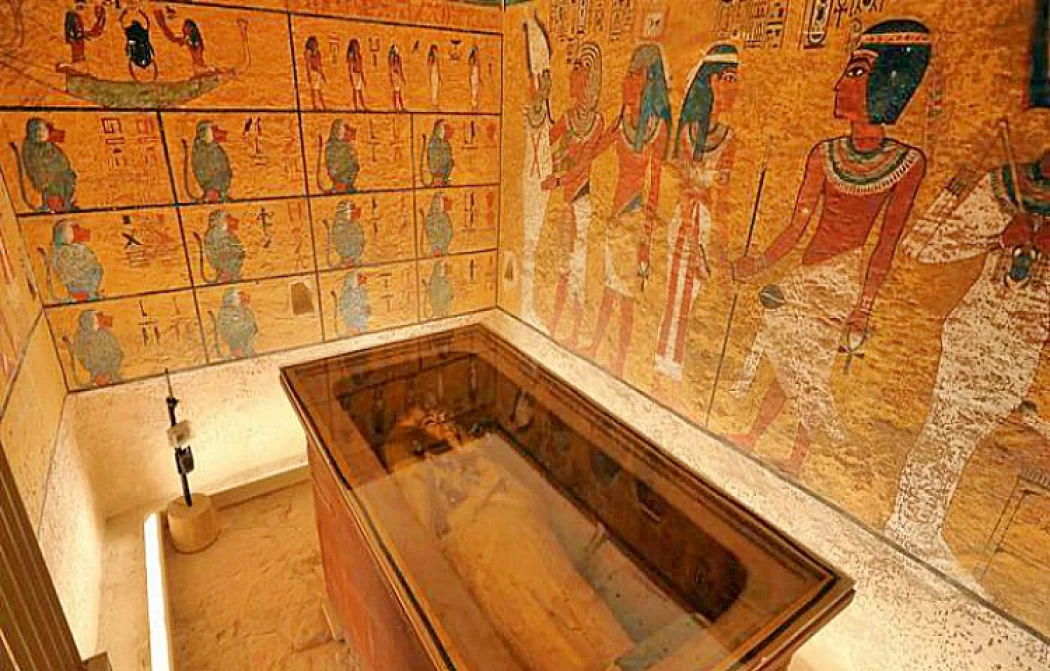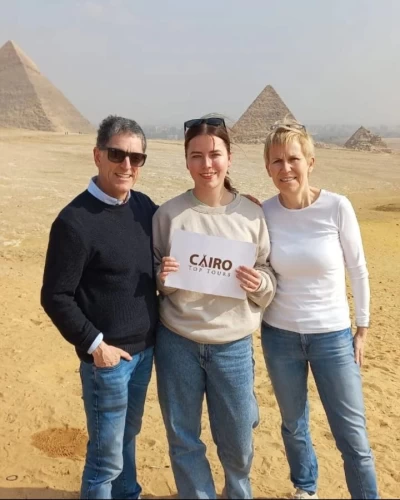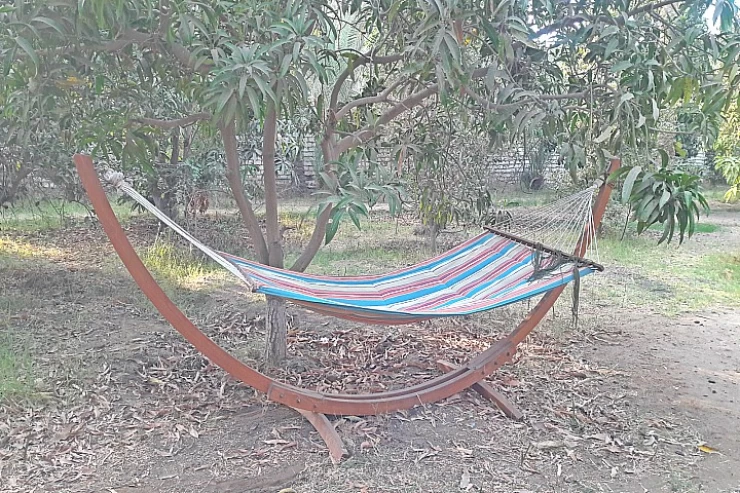
Tutankhamun's Tomb
Tutankhamun's Tomb
Tutankhamun appears to have disappeared from Egyptian public consciousness in a short time after his death. It remained practically unknown until 1922 when its tomb was discovered by the archaeologist Howard Carter.
Tutankhamun's tomb was robbed twice in antiquity, but according to the objects taken, it seems clear that these robberies were committed several times before Tutankhamun's definitive burial.
Valley of the Kings

Valley of the Kings in Luxor
Over time the exact location of the tomb was lost, being buried by stone chips belonging to later tombs. In the years that followed, the entrance to the tomb was covered by huts for the workers, who obviously had no idea what could be below. When at the end of the twentieth dynasty the tombs of the Valley of the Kings were completely dismantled, Tutankhamun's tomb was neglected, probably by simple forgetfulness.
The artifacts found in his grave have provided us with numerous clues about his daily life.
Jeweled, wrapped in the royal toga, and sitting on the throne with the hook and the royal flail Tutankhamun probably put awe on his subjects bowing before him, even though he was only nine years old at the time of his crowning.
From the examination carried out on his mummy, it is noted that as a teenager he had thin bones and a height of one meter and seventy-seven centimeters. The fragile build of the pharaoh cannot be traced back to a poor diet, the foods present in his grave reveal nutrition based on fruits, cereals, and protein-rich foods.
After the opening of Tutankamon 's tomb over 3000 years after his death, his favorite assets were photographed one by one. Instead of grandiose exploits, scenes of great mastery were found that depicted the domestic happiness and leisure activities of the pharaoh. Tutankhamun's angelic face is carved in gold in numerous artifacts.
We have no news of his possible academic merits, however, he probably began his education at the age of four, learning early to read and write. A large number of writing instruments were introduced into the tomb. In fact, the Egyptian people believed that in the afterlife the pharaoh became a scribe of the sun god.
During his adolescence, Tutankhamun followed activities not very different from today's youth. He devoted himself to collections, he loved driving wagons and practicing sports such as swimming, hunting, and fishing. When he died, the ruler was buried with numerous bows and nearly 400 arrows, as well as large quantities of clubs, daggers, and boomerangs. Six wagons were also buried, built with gilded wood, and decorated with reliefs and inlays of colored glass. Numerous finds from his tomb are now preserved in the Tutankhamun Halls of the Egyptian Museum in Cairo.
An important ritual in Pharaoh's daily life was clothing. The testimony that Tutankhamun was well equipped for this duty is given by the large copy of objects found in the tomb, including clothes, sandals, necklaces, and jewelry. Under the usual knee-length skirt, the pharaoh wore a triangular linen thong, tied around the waist. Sometimes the king wore shirts decorated with embroidery along the neckline. His clothes reveal the considerable costs incurred for his staff: the production of a shirt for the pharaoh also required three thousand hours of work.
In a beautiful decoration with ivory inlays, we can observe Tutankhamun and his only consort, Ankhensenamon. The queen, smiling and dressed in light clothes, offers a bouquet of lotus flowers to her husband who bends over to her. Ankhensenamon, the third daughter of Akhenaten and Nefertiti, married Tutankhamun, four years younger, at the time of his coronation when he was still a child. Their bond was very strong, also because of the common tragedy of the two sons born dead.
Despite its enormous wealth, Tutankhamun's tomb no. 62 in the Valley of the Kings is very modest in terms of size and architectural design compared to the other tombs on this site, due to Tutankhamun's accession to the throne at a very young age. And he reigned for only about nine years.
Planning any tours to Egypt? or from our varieties of tours in Luxor, you can easily see Tutankhamun's Tomb with Cairo Top Tours.
If you want to learn more about a place called El Kab Luxor Egypt | El Kab Thebes Luxor, it's like going back in time to when the ancient Egyptians were really amazing. You can explore and see all the cool things they built and imagine what life was like for them.
















